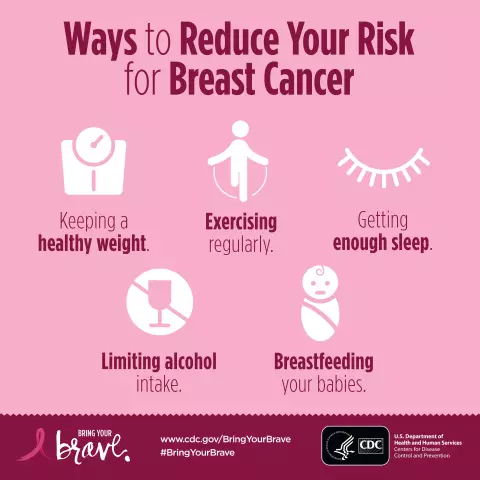- Author Rachel Wainwright [email protected].
- Public 2023-12-15 07:39.
- Last modified 2025-11-02 20:14.
Breast augmentation

Breast augmentation is one of the most popular plastic surgery in the direction of mammoplasty. Augmentation mammoplasty is a complete surgical procedure. Breast augmentation surgery is performed under general anesthesia and requires careful preparation of the patient, as well as his stay in the clinic (the period varies depending on the complexity of the surgical intervention and the patient's condition). Currently, various methods of breast augmentation with the use of different implants have been developed and successfully practiced. Indications for surgery are primary aplasia (absence of mammary glands), primary hypoplasia (underdevelopment of the mammary glands), involution of the mammary glands, mastectomy (surgical removal of the glands, both complete and partial).
From the history of augmentation mammoplasty
The need for breast augmentation surgeries was dictated by diseases that required excision of breast tissue, or led to deformation, asymmetry of the mammary glands in women. The first attempt at breast augmentation was made in 1889. Liquid paraffin was used as a filler (implant), which was injected into the breast gland. In 1895, the first augmentation operation was performed using the patient's own tissues (in this case, a lipoma excised from the patient's thigh). The unsatisfactory results of the performed operations prompted a further search for alternative materials for implantation into the mammary glands. So, throughout history, doctors have used glass balls, ox cartilage, polystyrene, polyvinyl sponges, polyurethanes,ivory and many other materials. The introduction of such materials led to the development of inflammatory processes in the tissues of the mammary glands, infections, tissue necrosis, and the rejection of implanted materials.
Only in the 60s of the 20th century, for the first time in medical practice for breast augmentation, silicone implants were used, which are the prototypes of those breast implants that are used in modern plastic surgery. The shell of the first implants passed filler molecules (filling substance), which led to the development of aseptic inflammation in patients, and the smooth surface of the implant led to the development of capsular contracture.
In the 80s, scientists hypothesized that the silicone breast implants used provoke the development of breast cancer. The Food and Drug Association has carried out numerous studies without finding any confirmation or refutation of this hypothesis. Modern breast implants are completely safe for the health of patients, and innovative technologies allow you to recreate the natural relief, shape and tactile sensations when touching an enlarged breast.
Breast augmentation methods. Non-surgical techniques. Implants
There are two main methods of breast augmentation: surgery and non-surgical practices.
Surgical methods for breast augmentation differ in the type of access to the breast:
- Submammary access - dissection of tissues in the submammary fold, which is most convenient for the surgeon, providing greater access to the tissues, and preferable for patients, since the scar will be hidden in the fold;
- Periareolar access - dissection of tissue around the areola. It is assumed that the scar is less noticeable in the areola, however, this technique entails the risk of damage and scarring of the milk ducts, which will interfere with natural lactation during breastfeeding;
- Axillary access - dissection of tissue in the patient's armpit is the most traumatic method of breast augmentation. The main advantage of the technique is the complete absence of scars on the mammary glands.
According to the method of placing the implants, they distinguish between the installation of implants directly under the breast and under the pectoral muscle. Recently, plastic surgeons have been talking about another technique for placing a breast implant under the fascia of the pectoral muscle, which is actually placement under the breast gland.

Non-surgical techniques for breast augmentation involve complexes of physical exercises, dietary supplements, hormones (slight breast augmentation is one of the side effects of some groups of drugs). It should be noted that physical training is ineffective, since it involves the pectoral muscles. The mammary gland itself does not contain muscle tissue. Dietary supplements and hormonal preparations give only temporary slight breast enlargement.
Modern implants are distinguished by their shape (round, drop-shaped), surface texture (smooth and ribbed textured), and also by filling (saline, gel, hydrogel). The shape and size of the implants are selected individually, based on the natural relief of the patient's breast.
Rehabilitation period after breast augmentation surgery
The rehabilitation period after breast augmentation surgery is characterized by swelling, painful sensations, bruising. The first 14 days after the operation, the patients are shown complete rest. During the first month, you must wear specially selected compression garments. In the first three months after breast augmentation, patients should avoid physical activity, swimming pools, saunas. The final result after breast augmentation surgery can be assessed only after 9-12 months.
Breast augmentation: reviews about the operation
Before deciding on a breast augmentation operation, reviews of which are very controversial, the patient should understand that mammoplasty is a full-fledged operation, and not a cosmetic procedure that entails certain health risks. In order to avoid the negative consequences of the operation, patients are strongly advised to study the existing methods of breast augmentation surgery, the available types of implants, and also visit the consultations of several plastic surgeons. Breast augmentation, reviews of which are available on the global network, requires considerable experience of a plastic surgeon in this particular direction. A surgeon's mistake can lead to undesirable consequences in the form of asymmetry, different sizes, visible scars, as well as the development of capsular contracture, an inflammatory process, implant rejection,its damage during the operation.
Breast augmentation before and after
Many plastic surgeons offer patients to explore the portfolio, which contains the work of the surgeon on breast augmentation before and after. This visual demonstration of the results allows patients to assess the real possibilities of the operation. The portfolio shows photos of patients and the results of breast augmentation before and after from different angles. Computer modeling allows you to apply the desired proportions to the real physical image of the patient.
Found a mistake in the text? Select it and press Ctrl + Enter.






